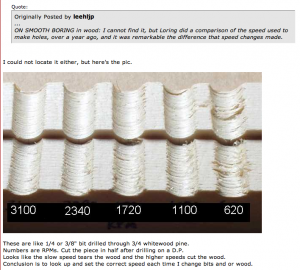cbb007
Member
I am now using my new Nova chuck and jaws and am extremely happy with them. I was never able to drill a satisfactory hole with my drill press, but now my holes turn out great.
Now I have another problem when drilling my blanks ... When the bit exits the blank I get a blowout every time, to varying degrees. I try to exit slowly, but it still happens. So far, the bits I have used have been standard grind. Would a brad point fix the problem?
On a drill press, I can put a scrap piece of wood under the blank, what can I do on the lathe?
Now I have another problem when drilling my blanks ... When the bit exits the blank I get a blowout every time, to varying degrees. I try to exit slowly, but it still happens. So far, the bits I have used have been standard grind. Would a brad point fix the problem?
On a drill press, I can put a scrap piece of wood under the blank, what can I do on the lathe?

